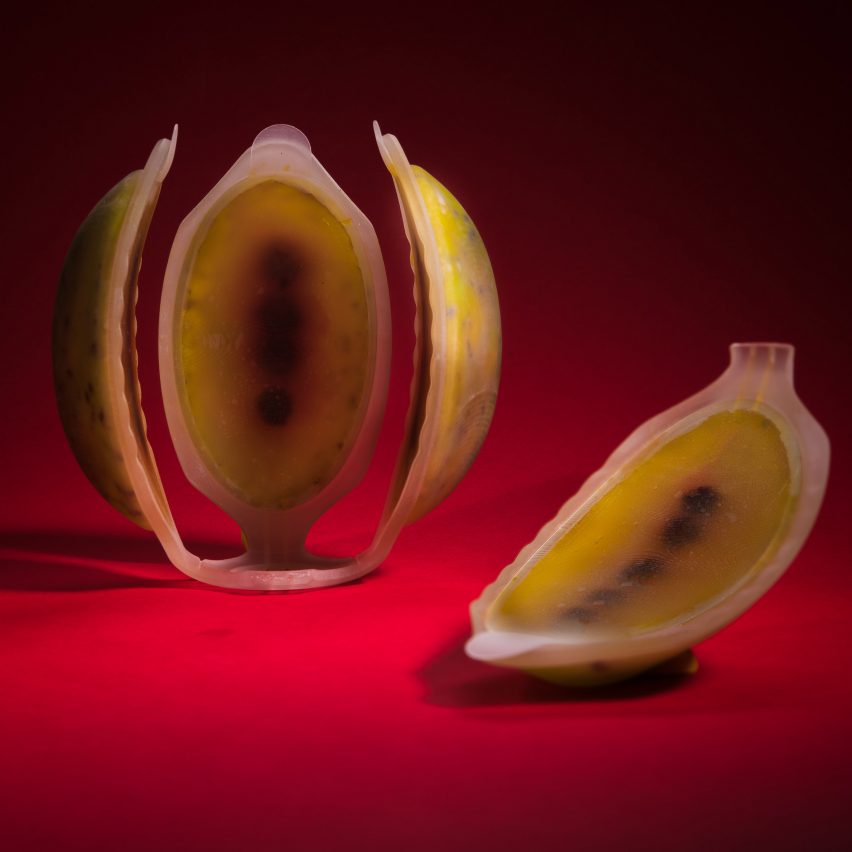
Bezalel Academy of Art and Design graduate Meydan Levy has developed five edible artificial fruits, which comprise printed cellulose skins filled with a cocktail of vitamins and minerals.
Called Neo Fruit, Levy's fake fruit have soft cases that are 3D-printed from translucent cellulose – an organic compound that gives plants their structure.
These skins are then injected with nutrient-rich liquids with various colours and flavours.
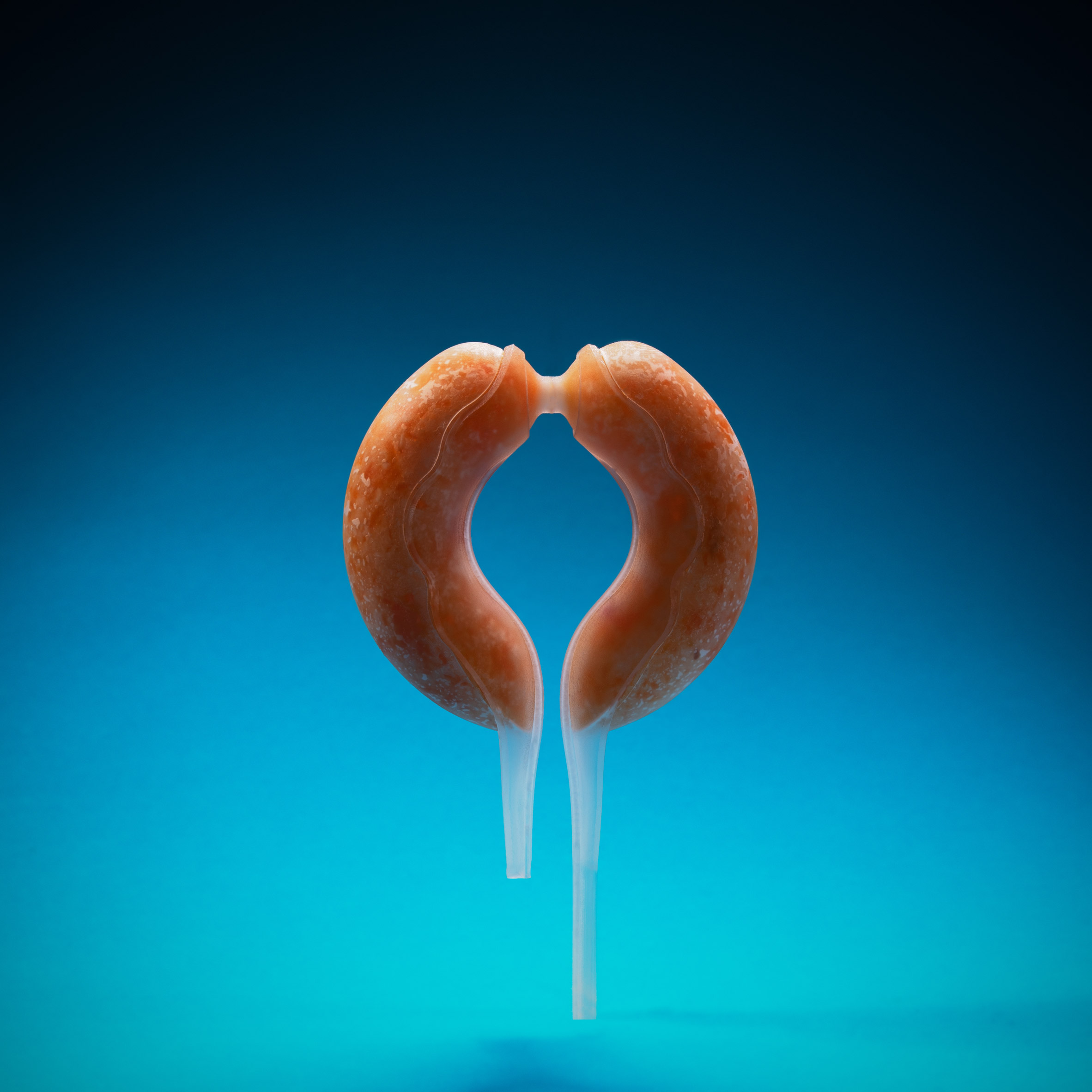
Levy describes the process as 4D printing because, unlike traditional 3D printing, the final form of the fruit changes after it comes out of the printer.
The cellulose skins are printed in a flat, compressed form, and only take on their final fruit-like appearance once the liquid is added.
The final form of the fruit is determined by built-in arteries, or micro-tubes, in the 3D-printed structures, which fill up to give the fruit volume.
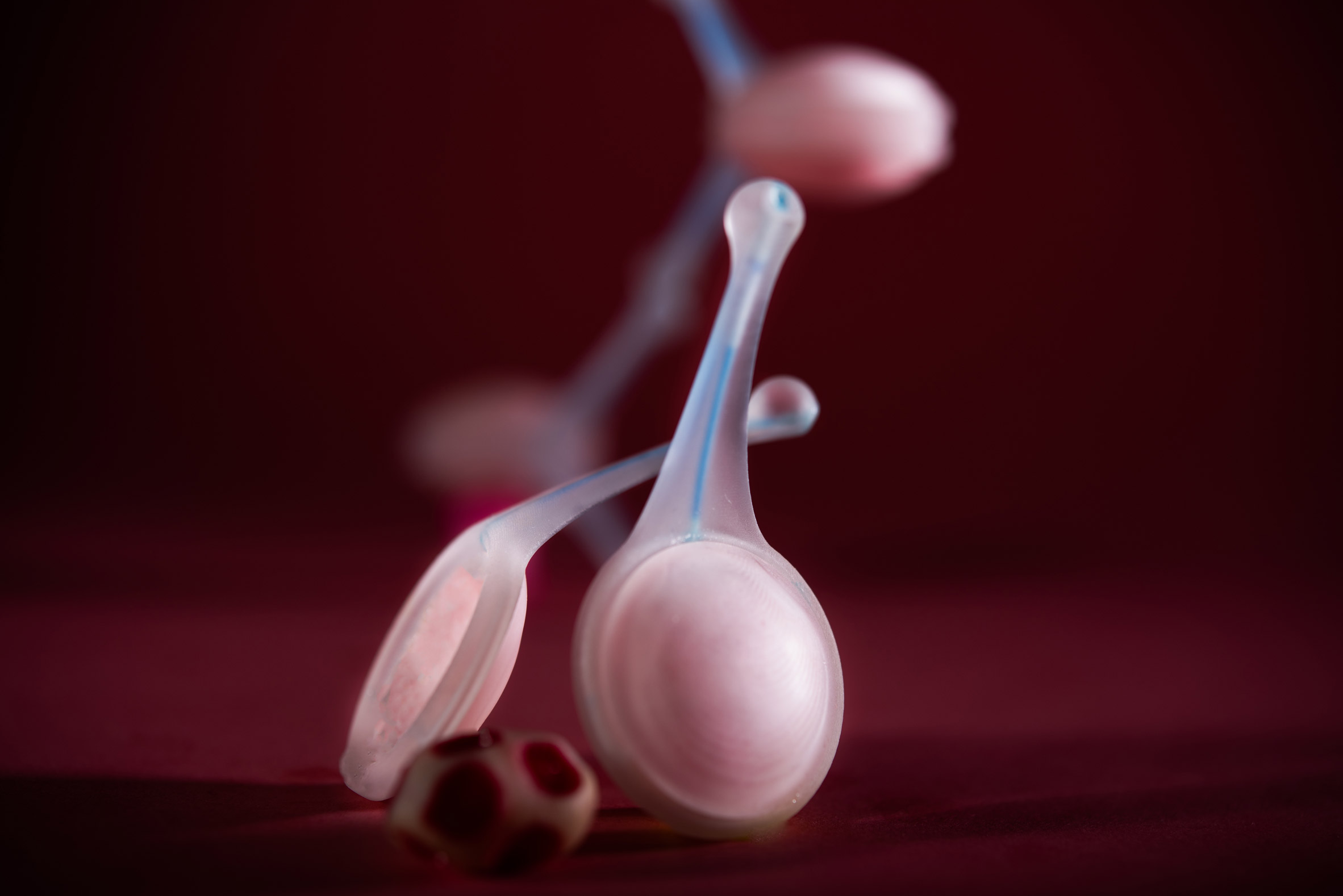
"Until the fourth dimension is activated, the dry fruit is flat and lightweight allowing for a long shelf life, efficient storage and ease of transport," Levy told Dezeen.
"Adding the liquids and activating the fourth dimension gives the fruit life because from that moment it can be eaten. The liquid becomes the biological clock of the fruit and gives it a certain life, meaning it will remain at its best for a limited but pre-planned time."
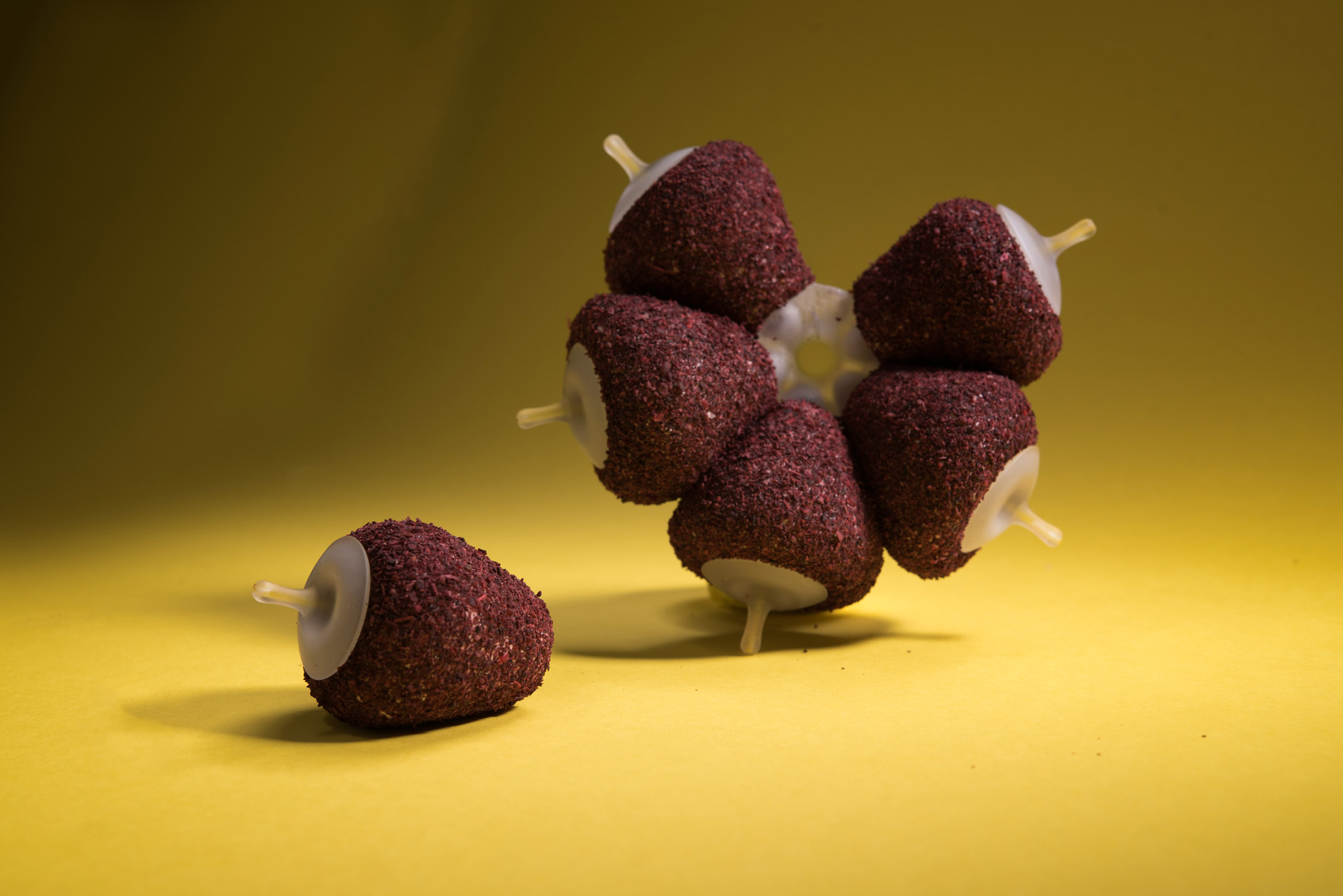
Despite looking like they come from an alien planet, all of the fruits are edible.
However, rather than mimicking the taste of real fruit, each of Levy's Neo Fruit has a unique flavour that is combined from a number of base ingredients.
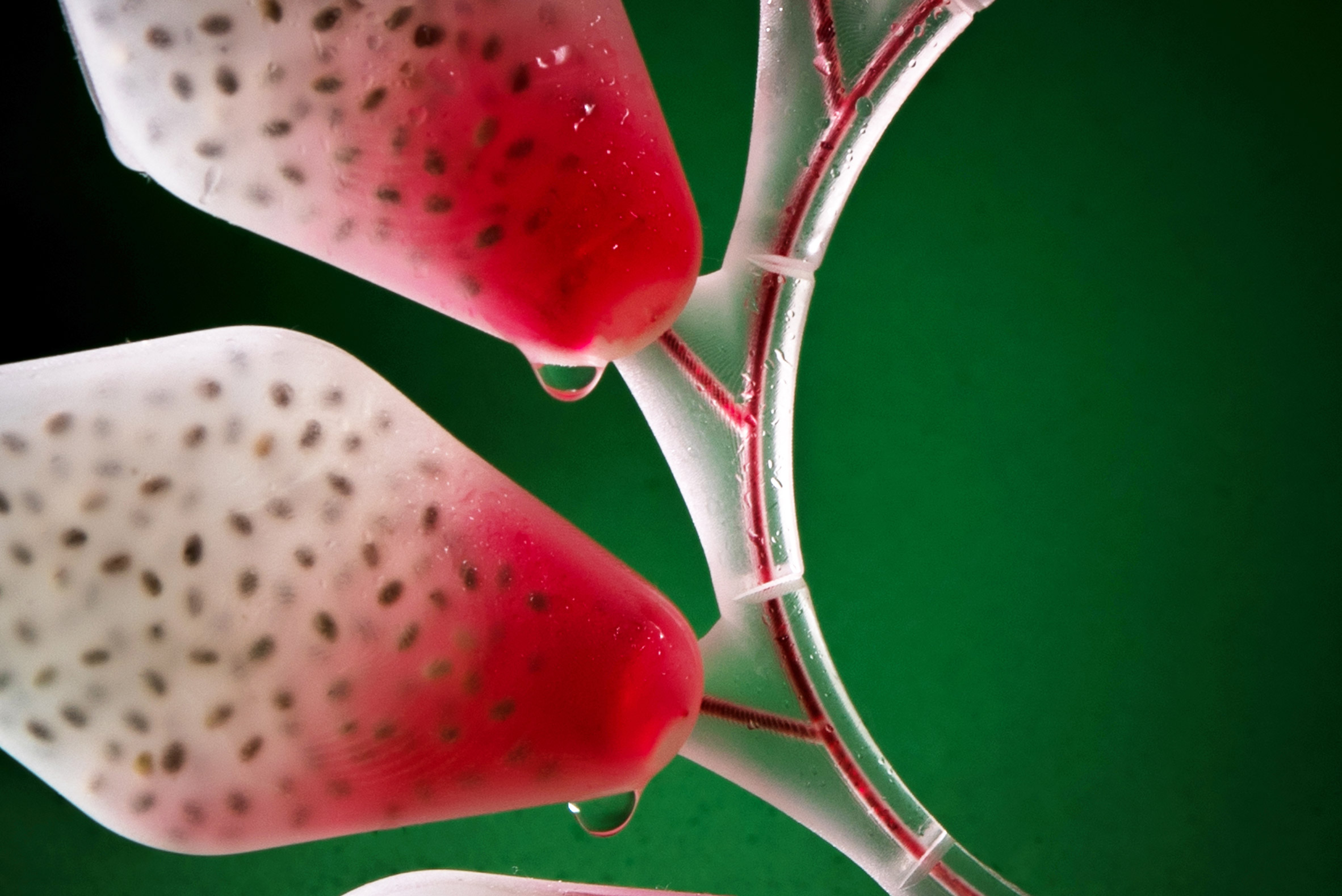
"I developed a device that allows me to extract oils, flavours and smells from almost any existing substance and it allows me to experiment with diverse and interesting taste and smell combinations," Levy explained.
"I developed the textures with the help of expert chefs in molecular cooking and researched the edible raw materials available to produce the appropriate colour and texture for each fruit."
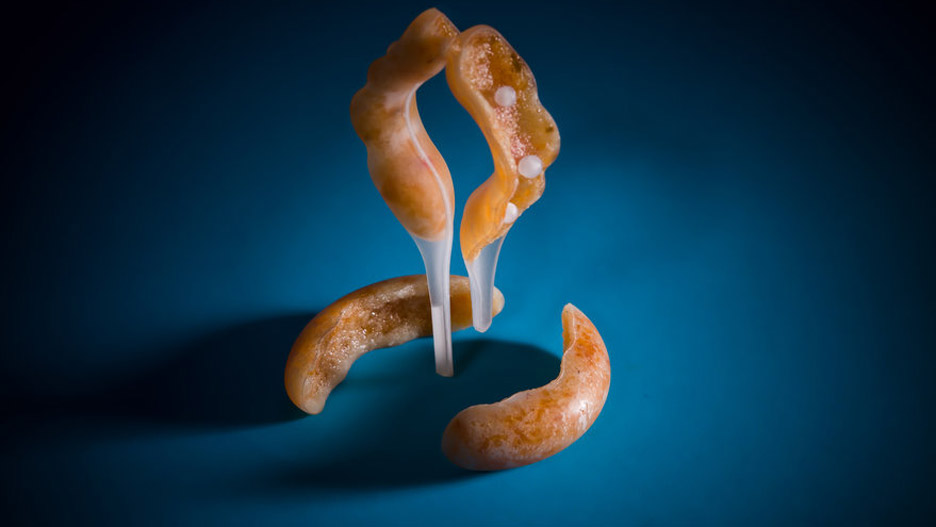
One of Levy's fruits consists of a series of small pods strung together like molecules. It requires the eater to crack it open and scrape the contents out with their teeth like an artichoke leaf.
Another is reminiscent of the interior of a passion fruit, but divided into three segments and held together by an outer and inner skeleton.
"This fruit contains additional nutrients which can be chewed and squeezed out of the 'bone'," Levy told Dezeen. "This is meant to extend the eating experience and preoccupation with the fruit."
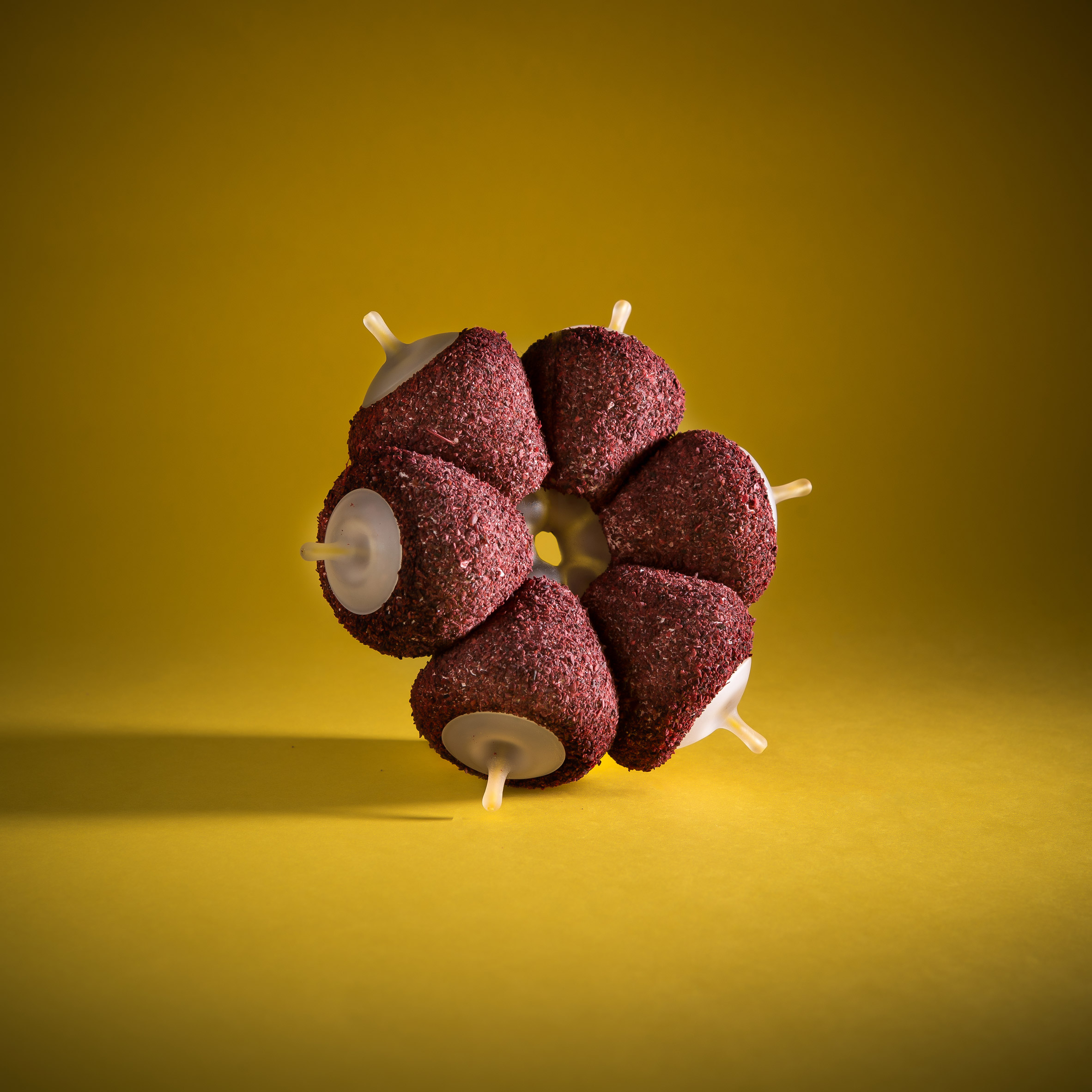
Levy's aim was to find new ways to feed the ever-growing human population and offer a more appealing alternative to using food supplements to improve nutrition.
He worked with nutritionists in order to develop a different blend of vitamins and minerals for each fruit, which are intended to meet the human body's wide range of nutritional needs.
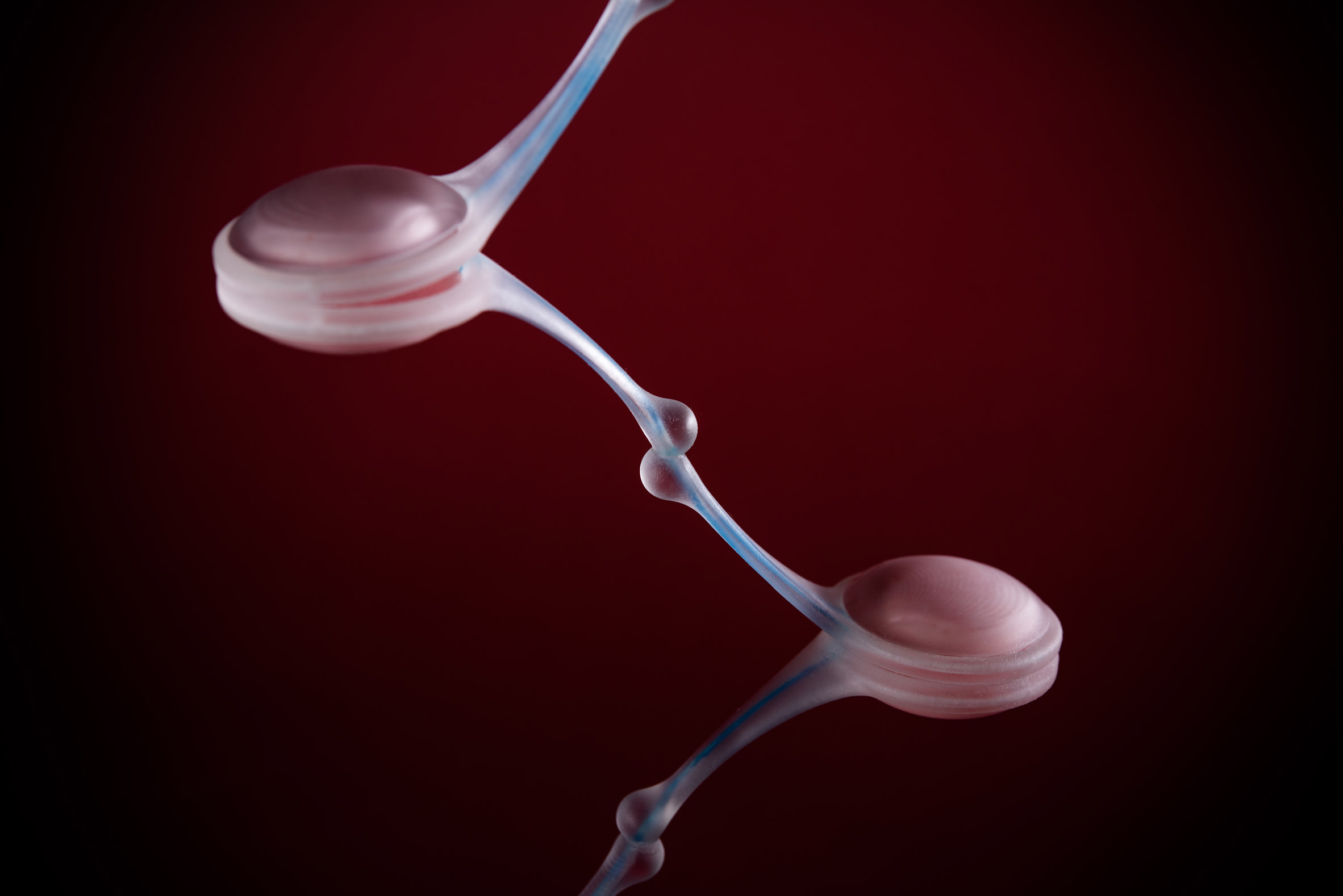
Levy looked at the way that real fruit is able to offer a sensory eating experience while communicating essential information.
The colour of a piece of fruit is not just an added extra, he suggested.
The pigments that make carrots orange, for example, are also a source of vitamin A, which is crucial for strengthening the immune system.

"Fruit is a whole product in perfect packaging, it holds both envelope and content in perfect reference to each other," Levy said.
"Fruits interact with the environment – changing colour and texture to indicate ripeness. The compounds that give them colour also have nutritional value and even taste components."
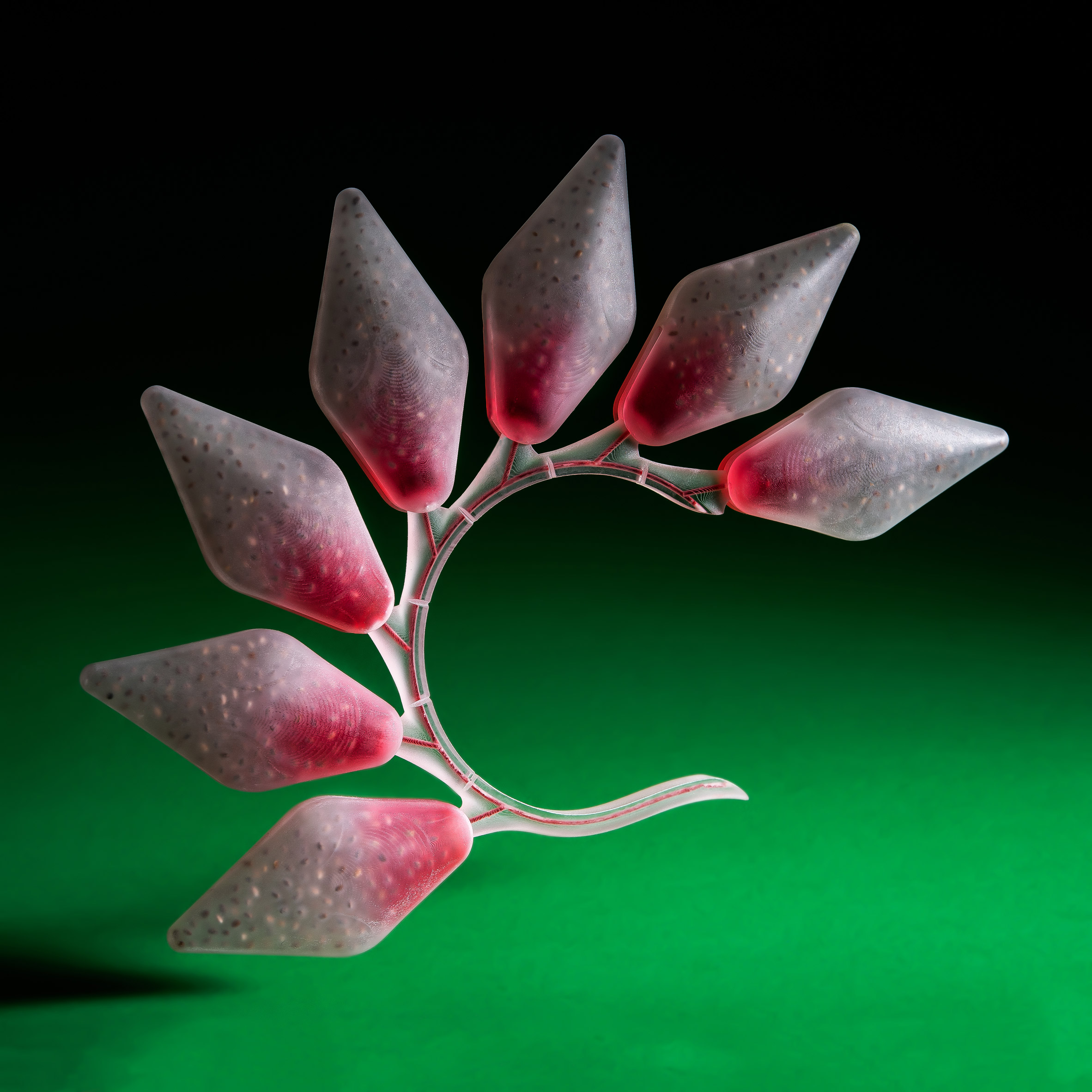
Other examples of 4D printing include a concept for flat-pack furniture that unfolds when exposed to heat and a shape-changing dress.
Elsewhere, designers have used additive manufacturing to create snacks from food waste and vegan steaks.
The post Meydan Levy creates 4D-printed artificial fruit filled with nutrients appeared first on Dezeen.
https://ift.tt/2RoOZe5
twitter.com/3novicesindia
No comments:
Post a Comment